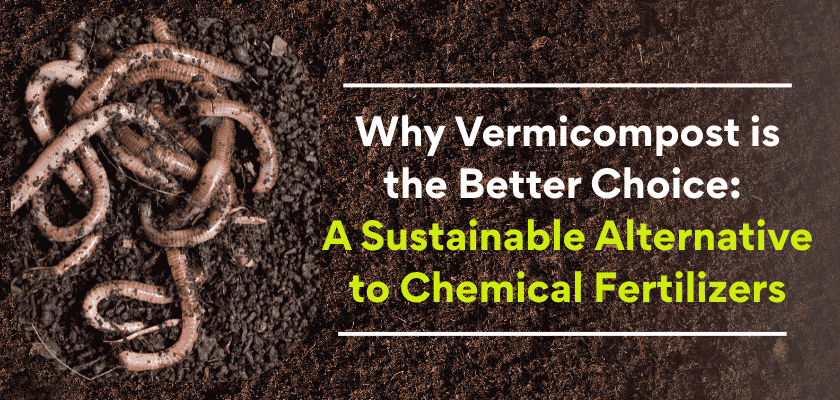Soil erosion represents the major environmental struggle that exists worldwide. The upper soil layer moves across the landscape through both natural elements, including wind and water, along with human-caused practices, including deforestation and incorrect agricultural operations. The whole process causes fertile land quality to decrease and destroys biodiversity while making areas more exposed to natural hazards. Environmental conservation along with sustainable land management, requires understanding why soil erosion takes place and w Learn about soil erosion’s causes, impacts, and strategies to mitigate its effects and preserve our natural resources for the next generation that effects it produces as well as potential strategies to stop it.
According to the assessment of the Food and Agriculture Organization (FAO), soil erosion produces annual losses of 75 billion tons which damages worldwide food security and economic stability. The seriousness of soil erosion leads to diminished agricultural output together with amplifying carbon release rates while destroying natural habitats. The eradication of soil erosion requires scientific investigation followed by governmental policies and community-driven initiatives that combine to create a solution.
Natural Causes of Soil Erosion
Natural forces play a crucial role in soil erosion, often working in tandem with human activities to accelerate the process. Water erosion, one of the most prevalent forms, occurs through various mechanisms such as sheet, rill, and gully erosion. These processes involve the movement of soil particles by rainfall, runoff, and flooding, leading to the degradation of agricultural land and riverbanks.
Wind erosion, particularly significant in arid and semi-arid regions, can result in the displacement of soil particles, reducing land productivity and contributing to desertification. The Great Dust Bowl of the 1930s in the United States serves as a stark reminder of the devastating effects of wind erosion on agriculture and the environment.
Other natural forces contributing to soil erosion include gravity, glacial activity, coastal erosion, and temperature fluctuations. Gravity-induced erosion, such as landslides and soil creep, can cause significant soil displacement in mountainous and hilly terrains. The glacial movement has the power to erode vast landscapes over extended periods, while coastal erosion driven by waves and tidal forces impacts shorelines and coastal ecosystems.
Temperature fluctuations, characterized by extreme heat and cold cycles, can cause soil particles to expand and contract, leading to gradual erosion over time. These natural processes, while often exacerbated by human activities, highlight the complex and multifaceted nature of soil erosion and its potential impacts on landscapes, ecosystems, and human settlements.
Soil erosion progresses mostly through natural forces even when human activities intensify it. These include:
Water Erosion: The major forms of erosion develop from rainfall together with runoff and flooding. Water removes soil particles which causes harm to farmland along with riverbanks. Different types of erosions occur within water environments.
- Sheet erosion: Uniform removal of soil in thin layers by raindrop impact and surface flow.
- Surface running water shapes narrow channels in the soil that become known as rill erosion.
- The continuous flow of water creates deep gully channels that cause serious land degradation.
Wind Erosion: Wind currents in dry and dry subtropical areas lift and transport soil parts which leads to both decreased agricultural viability and increased desertification. The Great Dust Bowl from the 1930s in the United States remains known as one of the major examples of wind erosion which triggered an agricultural catastrophe.
Gravity: Gravitational pull through landslides together with soil creep displaces huge amounts of soil primarily in mountainous and hilly areas.
Glacial Activity: Giant glaciers gradually remove extensive territories through geological processes that eliminate surface soil and rock material that spans numerous periods.
Coastal Erosion: The forces of waves and tides destroy shorelines which damages both coastal ecosystems together with settlements located along the coast.
Temperature Fluctuations: Surface breakdown occurs when thermal shifts trigger soil particle expansion and contraction thus making the landscape more prone to erosion.
Human-Induced Causes of Soil Erosion
Human actions enhance soil erosion rates which produces serious environmental damage.
Deforestation: Removal of trees coupled with vegetation destruction creates open soil surfaces that wind and water easily erode. The soil loses its capability to maintain its structure when roots disappear and therefore experiences greater washing away from heavy rainfall impacts. Each year the World Resources Institute reports 18 million acres of forest disappear which produces greater soil degradation.
Agricultural Practices: The combination of overgrazing along with monoculture farming methods and deep plowing turns productive land into desert areas which no longer absorb water efficiently. The overapplication of chemical fertilizers results in damaged soil quality because the environment becomes more vulnerable to erosion.
Urbanization: Construction sites together with industrial processes create topsoil removal areas that cause both waterbody sedimentation and erosion processes. The growing expansion of cities causes arable land to diminish therefore reducing farm territories.
Mining Activities: When extracting minerals from beneath the surface soil gets disrupted which makes it more likely to wash away in the form of erosion. Open-pit mining, in particular, leaves the land barren and vulnerable to landslides.
Poor Irrigation Practices: Soil degradation together with salinity increase occur when irrigation methods go wrong or are used excessively which makes the earth more susceptible to erosion. Water from irrigation dislodges vital minerals which produce lifeless unfertile earth.
Effects of Soil Erosion
Soil erosion is a significant environmental issue with far-reaching consequences for agriculture, ecosystems, and human societies. As topsoil is gradually removed by wind, water, or human activities, the land’s fertility and productivity decline, leading to reduced crop yields and food security concerns. Eroded soil particles can contaminate water bodies, causing sedimentation in rivers and lakes, which negatively impacts aquatic ecosystems and water quality.
Additionally, soil erosion contributes to increased flooding risks as the land’s water retention capacity diminishes. The loss of organic matter and nutrients from eroded soil also results in decreased biodiversity and habitat degradation. In urban areas, soil erosion can undermine infrastructure and increase the likelihood of landslides.
Furthermore, the process releases stored carbon into the atmosphere, exacerbating climate change. Addressing soil erosion requires implementing sustainable land management practices, such as contour plowing, terracing, and maintaining vegetative cover, to protect this vital natural resource and mitigate its wide-ranging negative effects.
Environmental Consequences
Soil erosion has far-reaching impacts on the environment, including:
- The process of taking away topsoil produces a depletion of necessary nutrients that makes agriculture less productive. Farmers need to depend too much on chemical fertilizers because soil depletion leaves them with no alternative.
- Soil erosion ends up in water bodies where it causes river sediments to increase while degrading water quality levels. The damaged aquatic ecosystem leads to smaller fish populations as well as major disruptions throughout the entire system.
- Soil erosion causes severe enough outcomes to convert productive land into a dry and desertified state. The highest vulnerability rests with dry and partially dry areas.
- The earth’s capacity to store carbon decreases due to soil erosion making an impact on climate change through increased greenhouse gas emissions. Soils serve as carbon storage facilities until they are degraded and as a result emit previously stored carbon to the environment.
- Erosion processes destroy natural habitats which threatens various plant and animal species to become endangered. Ecosystems lose their functioning properties when vegetation turns away because this disruption hinders wildlife from reaching their food or shelter sources
Economic and Social Consequences
- The decline of agricultural yields creates food shortage situations which cause both economic and social difficulties for farmers. When yields decrease farmers rely increasingly on imported food which increases consumer payments.
- Erosion-prone regions are exposed to increased danger from landslides and floods because of soil damage. The disasters result in property damage together with the loss of human lives.
- Extremely eroded areas become uninhabitable therefore local communities need to move to new locations. The displacement causes widespread social unrest and creates territory conflicts about available agricultural land areas.
- Governments and individuals need to spend high amounts on the process of restoring damaged land areas. The high financial cost of soil conservation initiatives together with reforestation projects bans many developing nations from taking action due to monetary restrictions.
Solutions to Soil Erosion
Soil Conservation Techniques
- Afforestation together with Reforestation allows planting trees which helps soil retention thereby minimizing erosion. The presence of forests serves to protect both land from water as well as wind-driven erosion.
- Soil protection happens through Cover Cropping which involves growing legumes and grasses between regular crops. The plants serve to increase soil nutritive value through their ability to fix nitrogen and add essential organic components.
- Slope areas become resistant to water erosion through the use of terraces which stop water from flowing downhill and lessen soil degradation. People widely implement this method for hilly as well as mountainous areas.
- Soil erosion prevention occurs through the deployment of organic or inorganic mulch which also maintains soil water content. Soil structure gets better due to mulch applications which simultaneously deliver necessary plant nutrients.

Policy and Community Efforts
- Policy Implementation: Establishing regulations that encourage sustainable land management and impose sanctions on harmful practices. Authorities can offer rewards to farmers who embrace conservation methods.
- Public Education Initiatives: Informing local communities about soil preservation and effective farming techniques. Agriculturists and property owners must understand the advantages of maintaining soil health.
- Global Collaboration: Worldwide efforts and treaties focused on addressing soil erosion and land deterioration. Entities like the UN and World Bank provide financial support for soil conservation initiatives across the globe.
Conclusion
Soil erosion presents a significant environmental threat that undermines ecological systems, economic activities, and human survival. While erosion occurs naturally, human actions have accelerated its pace, resulting in severe environmental degradation. Implementing deliberate soil conservation measures, coupled with policy initiatives and community engagement, can help manage and mitigate soil erosion. Safeguarding our soil is crucial as it ensures food security, protects biodiversity and maintains environmental balance for future generations. Current investments in soil preservation will contribute to a more sustainable and healthier planet in the years to come.
References:
- Food and Agriculture Organization (FAO) – www.fao.org
- World Resources Institute (WRI) – www.wri.org
- United Nations Environment Programme (UNEP) – www.unep.org
- U.S. Department of Agriculture (USDA) – www.usda.gov
- Soil Science Society of America (SSSA) – www.soils.org



